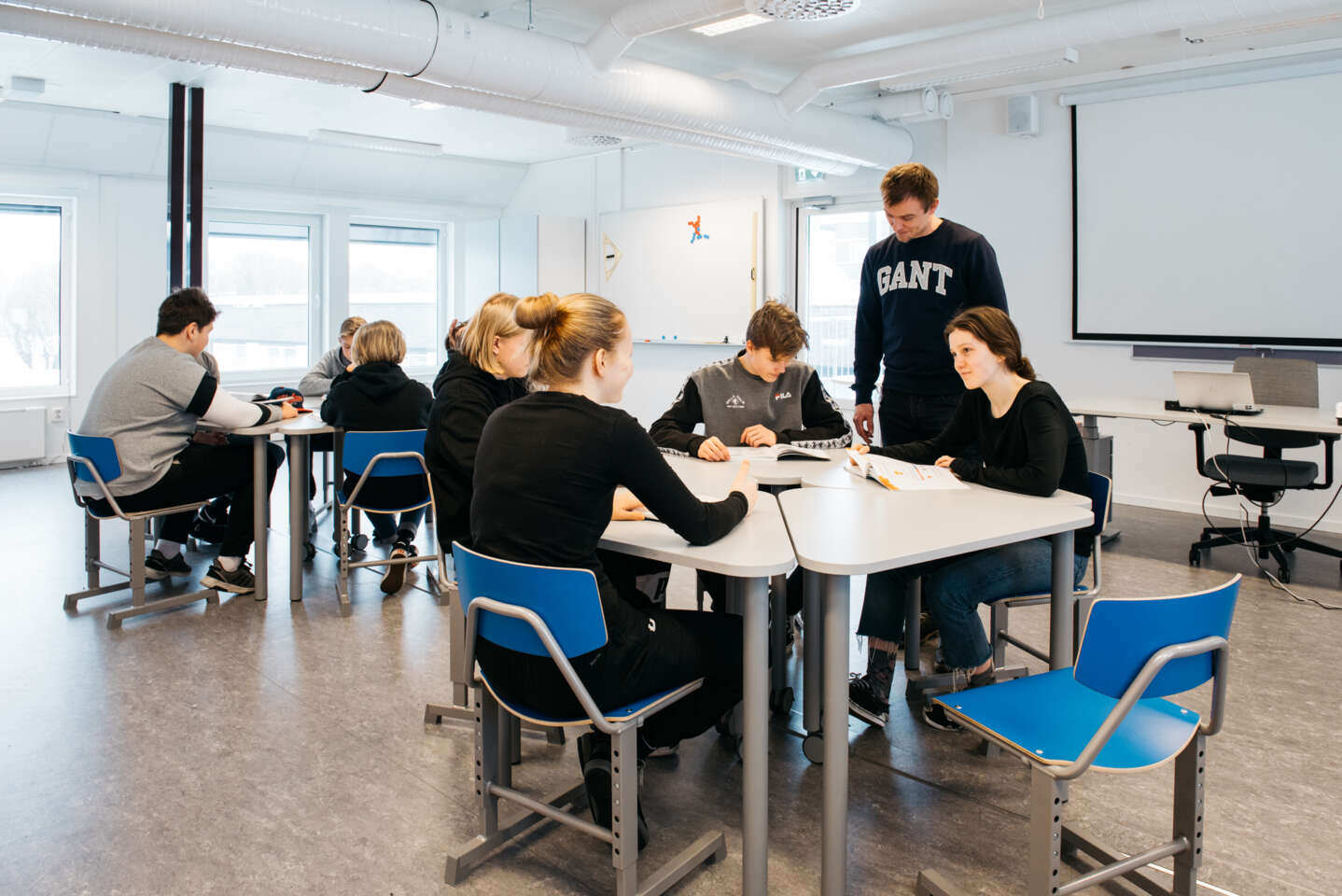
Children spend a lot of time in schools during the week, so school conditions have a significant effect on their well-being. If the air in classrooms is too dry, it can irritate the eyes, throat and nose and reduce work efficiency. Schoolwork performance is best if the air conditioning is sufficient and the air humidity is at the right level.
The humidity of classroom air is a component of indoor air quality and has an impact on how pleasant it is to be in the classroom. Air humidity also has health effects. Dry air can cause tingling in the eyes or the sensation of having dust in the eye. The mucous membranes of the nose can dry out and become irritated. The throat can also feel dry and irritated.
When the air is too dry, the movement of the cilia in the airways slows down, and the expulsion of air from the airways becomes difficult. This increases the risk of infections. On the other hand, if the air is too humid, evaporation of chemicals from materials increases and the risks of microbe growth goes up.
Dry indoor air is a problem particularly during the winter
In cold countries, indoor air is often too dry during the winter. The ideal relative humidity is between 30 and 40%. When the temperature is below freezing, however, indoor air humidity can drop to between 10 and 20%. The air feels particularly dry when the room is too warm.
Ventilation affects indoor air humidity
The purpose of ventilation is to provide clean air for breathing and to remove air impurities from the classroom space. It also affects the indoor air humidity. The rate of air renewal required for school facilities is 6 litres per second per individual or 3 litres per second per square metre of floor space. The ventilation must be balanced out so that there is sufficient change of air, but a draft is not produced as a result. It must also be adjusted according to the number of pupils.
The more efficient the air conditioning is, the better the learning results.
The impact of absences resulting from infection symptoms shows up in learning outcomes
A study was carried out in Finland of the impact of indoor air on the health and learning outcomes of sixth-grade primary school students in 334 schools. 43 percent of the pupils reported that they had experienced during that academic year upper respiratory tract infection symptoms such as a blocked nose, colds, a dry or painful throat, a hoarse voice, a dry or wet cough, or fever. 46 percent of pupils had been absent from school during that academic year due to respiratory tract infections.
Learning outcomes in mathematics were weaker in schools in which pupils had had the most respiratory-infection-related absences, headaches or difficulties in concentrating.
Sufficient air conditioning improves learning outcomes
A study involving 70 schools was carried out in the US. Insufficient air conditioning was found to be related to how often school pupils visited the school nurse because of upper respiratory tract infection symptoms. Air conditioning and classroom temperature were found to be related to learning outcomes particularly for mathematics, but also for reading and natural science. The more efficient the air conditioning was, the better the results obtained by the pupils.
In a Danish study, the boosting of air conditioning and lowering of classroom temperature were found to be related to how quickly the pupils carried out their tasks.
Mechanical ventilation ensures the best learning environment
In a Finnish study, it was found that the largest number of absences involving respiratory symptoms were in the schools that had insufficient ventilation. The measurements indicated that ventilation was insufficient in all of the classrooms that used either natural ventilation or only mechanical extraction ventilation. The study indicated that mechanical intake and extraction ventilation is required to ensure a pleasant and healthy learning environment.
Adaptable schools offer the best possible indoor air conditions
Adapteo’s adaptable schools use mechanical intake and extraction ventilation to ensure the best possible air quality.
We aim to always use the latest ventilation technology, which has both a high efficiency ratio and also automatically takes into account changes in classroom conditions. Regular maintenance is carried out on ventilation systems and the appropriateness of their dimensioning and settings are checked. In this way, the relative air humidity is also maintained at as optimum a level as possible. Niko Oksa Technical Sales Manager, Adapteo Finland
Oksa admits that it is a challenge to maintain sufficient indoor air humidity in cold countries during the winter, when the classrooms are being heated. Excessive indoor temperatures dry out the air, so it is important that the temperature is kept at the optimum level, between 20 and 22°C.
Want to hear more about our adaptable buildings?
Don’t hesitate to contact us for more information or any guidance for your building needs. There’s always a solution no matter how tricky your needs are.